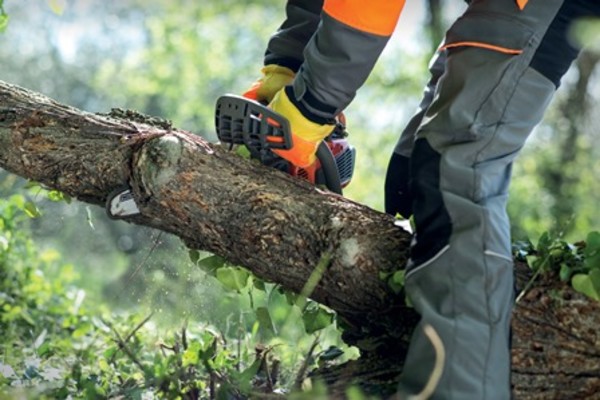
Security devices in forestryworks
A workshop managed by the University of Bari Department of Agro-Environment and Land (DISAAT) was held at Agrilevante to highlight the risks with the use of chainsaws. Also covered were the essentials of training for worker and individual protection devices
Work in the woods is well known to be among the most laborious and dangerous jobs due to the continuous exposure to various risks and the notable probability of accidents. For this context, what is needed is a safety management system with requirements set for differing levels of operations confronted by various workers involved and to also establish levels of legal responsibility. These were the issues taken up in the workshop Forestry Sites and Safety in the Woods: Reality and Prospects. The workshop backed by the University of Bari Department of Agro-Environment and Land (DISAAT) was set up to deal with technical and scientific issues involving forestry workers and provide an occasion for professional updating for those at work in unregulated sectors, as are those in forestry, in light of the recent UNI 11660 norms. Raffaele Cavalli, the head of the University of Padua TESAF Department, declared, “The introduction of a new technology by forestry businesses, always thorny, cannot ignore safety for the operator and the one and the other are closely linked to the training of the operators who must not come to the worksite without suitable training.” Of special importance is training for the correct use of the chainsaw and individual protection devices in compliance with the present norms. Danielo Monarca of the University of Tuscia-Viterbo DAFNE Department, explained, “The use of a chainsaw can become very dangerous without proper training and the fact is that someone who has worked with this machine for years commits mistakes which are a source of danger. A chainsaw operator must first take a psycho-physical and mental course and for this training, the operator must understand the theoretical part and the good practice part, which is much more full-bodied and indispensable. The teacher can have no more than 20 future operators in the classroom and in the woods the instructor can handle no more than five.” Paolo Balsari, the chief of the University of Turin DISAFA Department, pointed out, “Also the noise made by a chainsaw is dangerous and for this reason protection for the operator is decisive for the risk of this exposure during work at the level of more than 80 decibels, when audio protection is advisable, but at 85 to 87 this is essential and at beyond 87 you’re outside the law. The protection to use are earcuffs or foam insert ear plugs.








